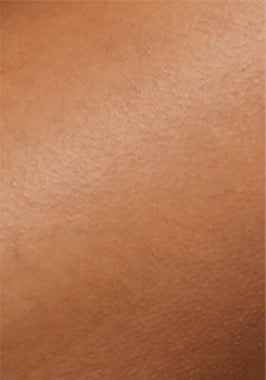The right skin care depends greatly on our individual skin type. Every skin type has special needs and it is essential to know these in order to optimally tailor the care to it. Care tailored to your own skin type is the key to healthy and radiant skin.
The condition of our skin is influenced by a variety of factors. Genetics plays a key role, but lifestyle also leaves its mark on our skin. Eating habits can have a significant impact on the condition of the skin, while risk factors such as regular consumption of alcohol and cigarettes or intense UV radiation can dry out the skin and cause it to age prematurely.

Not to be forgotten is the influence of hormone levels, which can lead to skin problems such as acne, especially in young people. Knowing and understanding these factors is crucial in order to correctly assess your own skin type and care for it accordingly.
Table of contents:- Part 1: What skin types are there
- Part 2: What skin type am I?
- Part 3: The skin type test online
- Part 4: Conclusion
What skin types are there
The diversity of our skin is reflected in different skin types, from dry skin to oily skin. In general, five main categories of skin types can be identified:
Normal skin: This skin feels neither too dry nor too oily. It is well balanced and does not tend to be excessively shiny or dry.
Dry skin : Dry skin can feel rough and flaky. It tends to lose moisture and requires a rich moisturizer to keep it supple.
Oily skin: Oily skin has increased sebum production, which can make it shiny. Enlarged pores and acne tend to be more common in this skin type.
Combination skin: Combination skin is a combination of different skin types. Typically, the T-zone (forehead, nose and chin) is oily, while cheeks and other areas can be drier.
Sensitive skin: Sensitive skin reacts easily to external stimuli and can become irritated. It requires particularly gentle care products.

It is important to note that skin can undergo changes over time and under different influences. An individual assessment can help identify your skin type and choose the right care routine.
What skin type am I?
How do you recognize your skin type?
Determining your skin type is the first step to effective skin care. Here is a simple guide to determining your skin type:
Observe the external features of your skin: Start by observing the external features of your skin. Pay attention to the texture, moisture level, elasticity and color of your skin.
Identify blemishes and problem areas: Look for blemishes such as acne or blackheads, dryness, oily patches or redness. These can give you information about your skin type.
Regular monitoring and documentation: Skin changes can occur over time. That's why it's important to regularly monitor your skin and document any changes. This will help you choose the right skin care products and improve your skin's health.
The “What skin type am I?” test

There are different methods to determine your skin type. Here are some common methods:
- Tissue test : When you wake up in the morning, gently pat your face with a tissue. If there is no or very little oil on the tissue, you probably have dry skin. If the tissue is oily in some spots, you probably have combination skin. If the tissue is oily all over, you probably have oily skin.
- Sebum production test : Another test is to check your skin's sebum production. If your skin gets oily quickly, you most likely have oily skin. If your skin gets oily after a few hours but not excessively, you probably have combination skin. If your skin rarely gets oily, you probably have dry skin.
- Moisture test: Dry skin tends to be dehydrated. If your skin quickly becomes tight and dry after cleansing, this is a sign of dry skin. If your skin retains moisture well and does not dry out immediately, you probably have normal or combination skin.
The skin type test for home
Step 1: Prepare your face
Wash your face thoroughly with a mild cleanser to remove all traces of makeup, dirt and oil. Gently pat your face dry with a clean towel.
Step 2: Wait an hour
After cleansing, leave your skin in its natural state for at least an hour without applying any products or moisturizers. This will allow your skin to show its natural state.
Step 3: The tissue test
Take a clean tissue or toilet paper and gently dab it on different areas of your face, such as your forehead, nose, cheeks and chin. Notice how your skin reacts to the tissue.
Step 4: Interpret the results
- If the cloth doesn't absorb oil anywhere and your skin feels dry, you probably have dry skin.
- If the cloth absorbs some oil in some areas (especially in the T-zone) and your skin otherwise feels dry, you probably have combination skin.
- If the tissue is oily all over and your skin feels greasy, you probably have oily skin.
- If the tissue does not absorb oil anywhere and your skin feels normal, you probably have normal skin.
|
Skin type |
characteristics |
Test result |
|
Dry skin |
|
If the paper does not absorb any oil at any point after the tissue test and your skin feels dry, you probably have dry skin. |
|
Combination skin |
|
If the tissue absorbs oil slightly in some areas (mainly in the T-zone) and your skin otherwise feels dry, you probably have combination skin. |
|
Oily skin |
|
If the tissue is oily all over and your skin feels oily, you probably have oily skin. |
|
Normal skin |
|
If the tissue does not absorb any oil anywhere after the tissue test and your skin feels normal, you probably have normal skin. |
Step 5: Documentation
Keep track of your test results to document your skin type. This can help you choose skin care products and routines.
Please note that this is only a rough estimate. It is best to discuss the results with a dermatologist to get an accurate determination of your skin type and the right care recommendation.
Sunscreen test
Sun protection is crucial for skin health, especially when it comes to protecting against the harmful effects of the sun's UV rays. A sunscreen test can help you determine your skin's sensitivity to UV rays and take the right protective measures.

To carry out a sun protection test, you should first determine your skin type, e.g. with a skin type test for the solarium .
Then you can choose the right sunscreen for your skin type. The different sun protection levels (SPF) offer different levels of protection, so it is important to choose the right SPF level that suits your skin type.
With the right sunscreen, you can protect your skin from premature aging, sunburn, and even skin cancer. Make sure you know your skin type and adjust your sunscreen accordingly to best protect your skin.
Consultation with a dermatologist
Consulting a dermatologist has numerous benefits for skin health. A dermatologist can provide an accurate diagnosis and assess individual skin needs. The Fitzpatrick Skin Type Test is a helpful tool to determine skin type and make the right skin care decisions.

A dermatologist can not only identify specific skin problems, but also make recommendations for optimal skin care. This professional advice can help treat skin problems, prevent premature aging, and optimize skin health.
So if you have questions about skin health or want to improve your skin care routine, visiting an experienced dermatologist can be an extremely wise decision.
Dermatologists are highly trained professionals who can accurately diagnose your skin type and any skin problems in order to offer customized recommendations and solutions that can keep your skin in top condition.
The skin type test online
Online resources and apps can be valuable tools to help you better understand your skin type and skin care needs. There are several platforms and apps that can help you determine your skin type by asking questions about your external skin features and habits. Some of these online resources and apps include:
Online resources:
- The For-Me skin type test
- The quiz from OH SO PURE
- The questionnaire from the Skin Health Guide
- The skin test from Dr Hauschka
- The Garnier skin type test
Apps:
- App Doc's Doctors' Assessments
- The Skin Screener's Skin Cancer Check
- SQIN's AI-assisted skin analysis
These tools often offer advice and product recommendations based on the test results. However, it is important to note that the accuracy and reliability of such online skin tests and apps can vary.
You should therefore consider them as a supporting tool for your skin care analysis and compare the results with the information provided by a dermatologist or professional skin care expert. Using online resources and apps to better understand your skin type can provide valuable insights and help you make the right skin care decisions.
Conclusion
Knowing your skin type is crucial for proper skin care. Our skin is as individual as we are, and needs can vary from person to person. That's why it's important to know your own skin type in order to develop a customized skin care routine.
In this article, we have introduced different skin types including normal skin, dry skin, oily skin, combination skin and sensitive skin. We have also explained different methods to determine skin type including external skin features, tissue testing, sebum production testing and moisture testing. We have also emphasized the importance of testing sunscreens and seeking professional skin advice from a dermatologist.
It is advisable to check your skin type regularly and adjust your skin care habits accordingly. This will help you prevent skin problems and maintain healthy and radiant skin. Remember that your skin type may change over time, so checking regularly is important.




























